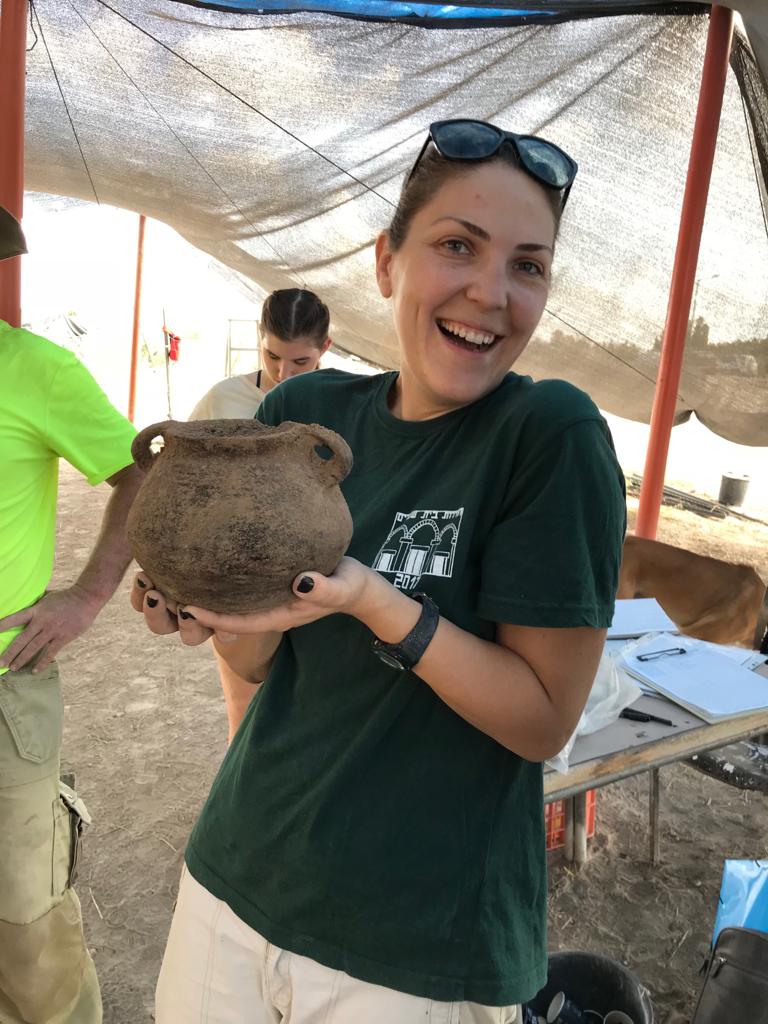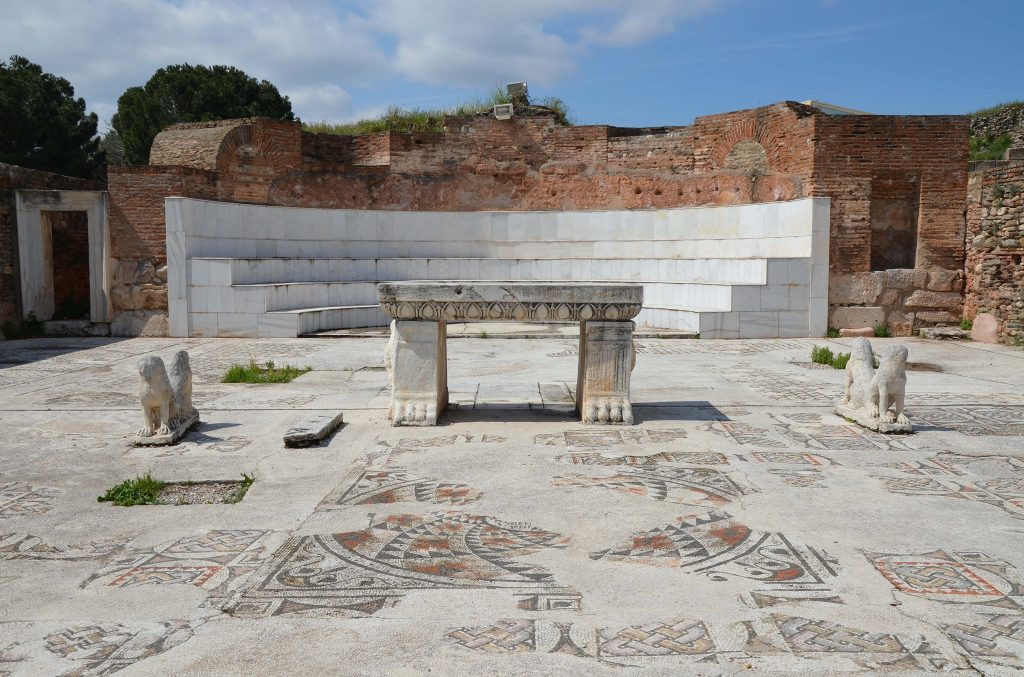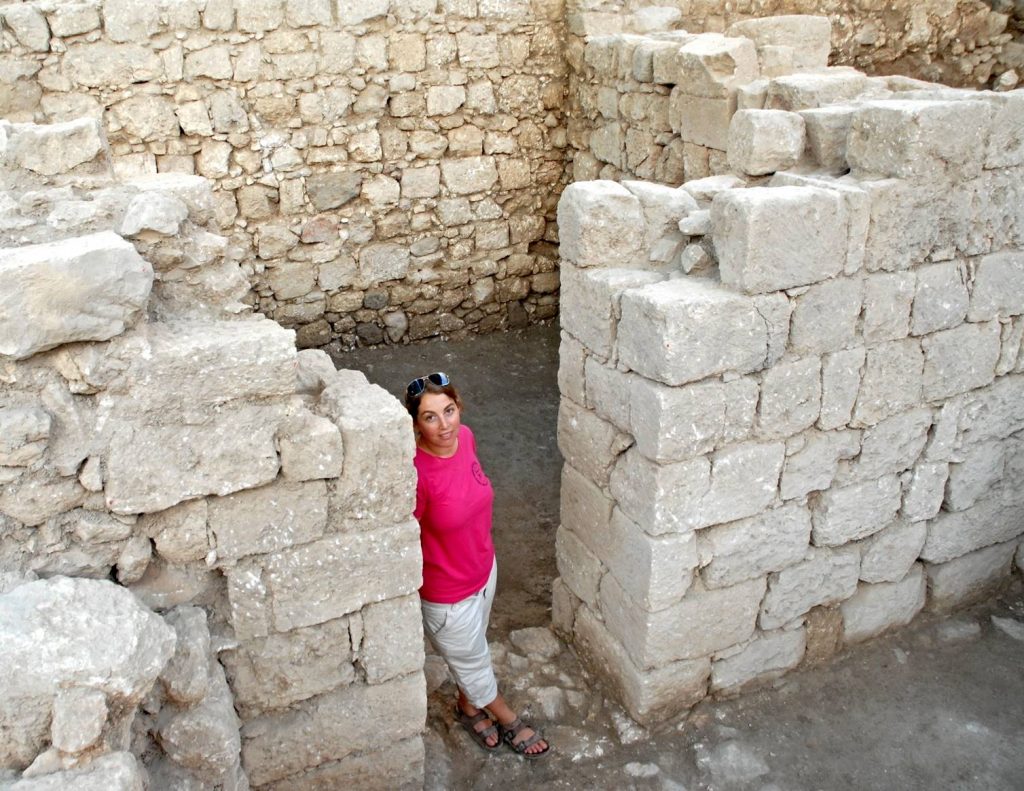ADI ERLICH — In the Court of the Patriarch: New Excavations at Roman Beth She’arim in the Galilee
13th January 2020, University College London
This lecture introduced the work from recent excavations at the famous Roman settlement of Beth She’arim in the Galilee, which have focused for the first time on the hill-top town.

Six seasons of excavations have brought to light a large and well-planned settlement with a monumental gate, public buildings, houses, water installations and traces of industry. Ritual baths confirm the town’s Jewish character, while hiding complexes may relate to the Bar Kokhba revolt (132-136 CE).
In the 2nd century Beth She’arim was a major centre of Jewish life and culture, the seat of the Jewish sages, the Sanhedrin, and home to Rabbi Judah, the patriarch who compiled the Mishnah-Jewish law. The town became a favoured cemetery for Jews drawn from the Land of Israel and across the eastern diaspora in the 3rd Century.
YOSEF GARFINKEL — The Murder of James Leslie Starkey, Discoverer of Lachish
Our inaugural Zoom lecture was presented by Professor Yosef Garfinkel on Tuesday 26 May 2020, who spoke on ‘The Murder of James Leslie Starkey, Discoverer of Lachish‘ – combining a murder mystery from the 1930s with the archaeology of one of Israel’s most famous sites.

We were delighted to see so many of our members attending virtually. If you weren’t able to join us, or would like to watch the lecture again – just click on this link: AIAS YouTube.
The actual lecture starts at 2:55 minutes. You can watch it online, or download the file to watch later (helpful for those suffering from a slow internet connection).
SHIMON GIBSON — Recent Archaeological Excavations on Mount Zion in Jerusalem



On 18 June 2020, Professor Shimon Gibson of the University of North Carolina presented a virtual lecture on his fieldwork at Mount Zion. To watch his lecture, go to: AIAS YouTube. The presentation starts at 3:46 minutes.
RAFI LEWIS — Time-thinking, Archaeology and the Battle of Hattin

On 16 July 2020, Dr Rafael Lewis, Senior Lecturer at Ashkelon Academic College, presented an online lecture on ‘Time-Thinking, Archaeology and the Battle of Hattin‘.
How does one study a battlefield in a landscape which has seen numerous conflicts and was subjected to so many changes over the years? And how can you locate archaeologically a catastrophe which has not left behind a destruction layer?
To find out, go to: AIAS YouTube where you can view a recording of the session. The presentation starts at 2:54 minutes.
GARY A. RENDSBURG — Jews In Arabia


On 15 September 2020, Professor Gary Rendsburg of the Department of Jewish Studies at Rutgers University gave a fascinating online lecture exploring how textual evidence can cast light on the lesser-known Jewish communities living in the Arabian peninsula, in the period from 70 CE to the rise of Islam in the 7th century.
Jews lived in oases in northern Arabia, as Jewish tribes in and around Medina, and even formed the basis of a Jewish kingdom in Yemen — while the wealthiest among them arranged for their burials back in the land of Israel, despite the great distances involved.
This narrative reminds us how time and again the historian of Judaism needs to have the broadest cultural and geographical horizons.
To watch this lecture, go to: AIAS YouTube. The presentation starts at 2:48 minutes.
YANA TCHEKHANOVETS — The Holy City? Fourth-Century Jerusalem in the Light of the New Archaeological Data
On 1 October 2020, Dr Yana Tchekhanovets of the Israel Antiquities Authority and Ben Gurion University in the Negev spoke to the society about fourth-century Aelia Capitolina/Jerusalem, explaining how new archaeological discoveries are presenting a complex portrait of the city that challenges traditional views of its smooth and quick Christianization.
Key to this are finds from the large peristyle mansion of the Late Roman period, recently exposed in salvage excavations at the Givati site, located close to the ‘City of David’ — the historical nucleus of ancient Jerusalem. This had been violently destroyed by an earthquake in AD 363.
Dr Tchekhanovets presented many finds from the site that attest to the Roman nature of the building and its clearly Pagan beliefs — carved bone and ivory items, statuettes of the gods and votive offerings, gemmae, masques, magic objects, and osteological remains of public sacrifice ceremony.
Thanks to the secure, sealed archaeological context of this material, it is now possible to question the historical narrative presented by the ecclesiastic sources and to reconsider the nature of conversion process of the central city of Christendom.
To watch this lecture, go to AIAS YouTube. The presentation starts at 2:01 minutes.
KIMBERLEY CZAJKOWSKI — Re-approaching the Babatha Archive
On 18 November 2020, Dr Kimberley Czajkowski of the University of Edinburgh presented a zoom lecture on a collection of papyri from the Judean Desert, known as the Babatha archive. This was hosted jointly by the Anglo-Israel Archaeological Society and the Institute of Jewish Studies, UCL.

Found in The Cave of Letters, these papyri form the archives of two families from the village of Maoza, on the southern coast of the Dead Sea in the Nabataean Kingdom and later Roman Arabia, and date from around 106 CE.
Commonly named after the Jewish women to whom most of the papyri belonged, Babatha and Salome Komaise, they are a mix of administrative and legal documentation, including deeds of sale and gift, marriage contracts, loans, census returns and disputes. As Dr Czajkowski demonstrated, they provide a fascinating window into the past lives and troubles of a long-gone community.
To watch this lecture, go to AIAS YouTube. The presentation starts at 2:41 minutes.
CHARLOTTE HEMPEL — Ezra’s Legacy in the Dead Sea Scrolls

On 26 November 2020, Professor Charlotte Hempel of the University of Birmingham spoke to the society via zoom on a seemingly odd aspect of the Dead Sea Scrolls – the absence of Ezra, the Father of Judaism, who brought the law back from Babylon to Jerusalem. Seeing how prominently Jewish legal debates figure in the scrolls, this is a notable omission. Ezra is again absent from the famous praise of key figures in Jewish history offered by the 2nd-century BCE priestly sage Ben Sira, who only mentions the returned exiles Zerubbabel, Jeshua and Nehemiah. And Ezra is also missing from 2 Maccabees, where Nehemiah alone appears as the builder of the temple and altar.
In a fascinating lecture, Professor Hempel, gives us insight into the figure of Ezra, and some of the politics surrounding his representation in these ancient texts.
To watch this lecture, go to AIAS YouTube.
ANTHONY SHEPPARD — Fuzzy Frontiers and Funny Faiths

On 16 December 2020 Anthony Sheppard of the British Institute at Ankara presented a lecture on the concept of religious boundaries, investigating the nature of the ‘fence’ around Jewish Law in the Greek-speaking diaspora of the Roman empire.
Dr Shepherd presented a model in which fluid boundaries, allied to the high standing of many Jewish communities such as Sardis, facilitated Jewish influence on contemporary pagan religious developments — with particular reference to cults such as Theos Hypsistos (‘God Most High’) and the ‘Holy and Righteous One(s)’.
To watch this lecture, go to AIAS YouTube (lecture starts at 2:35 minutes).




